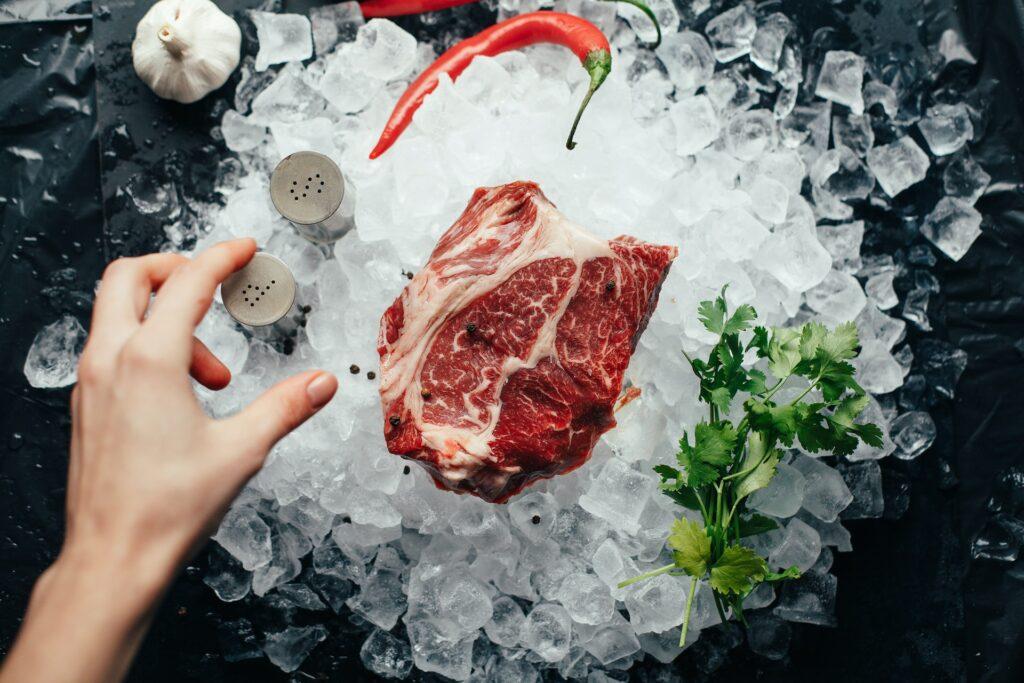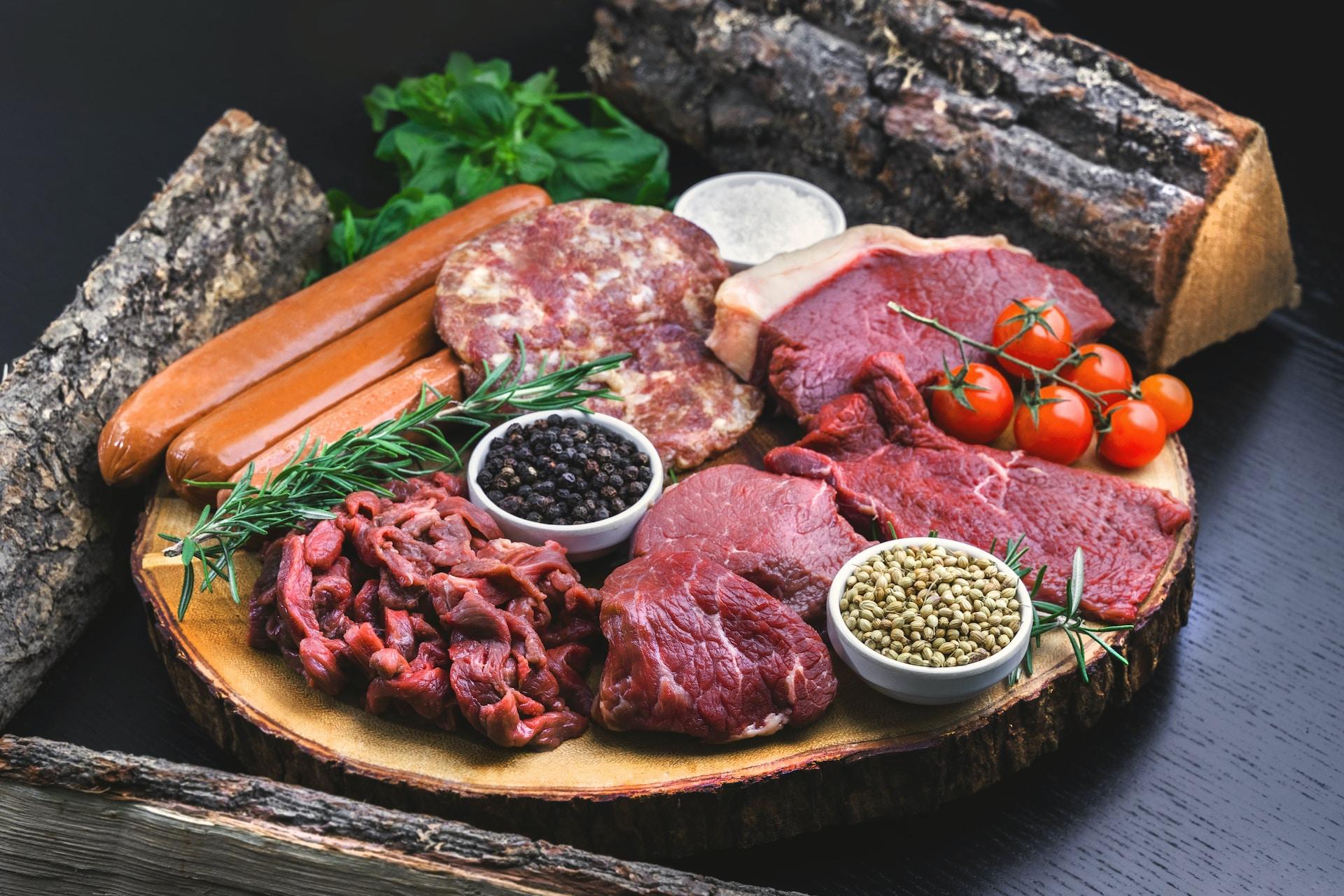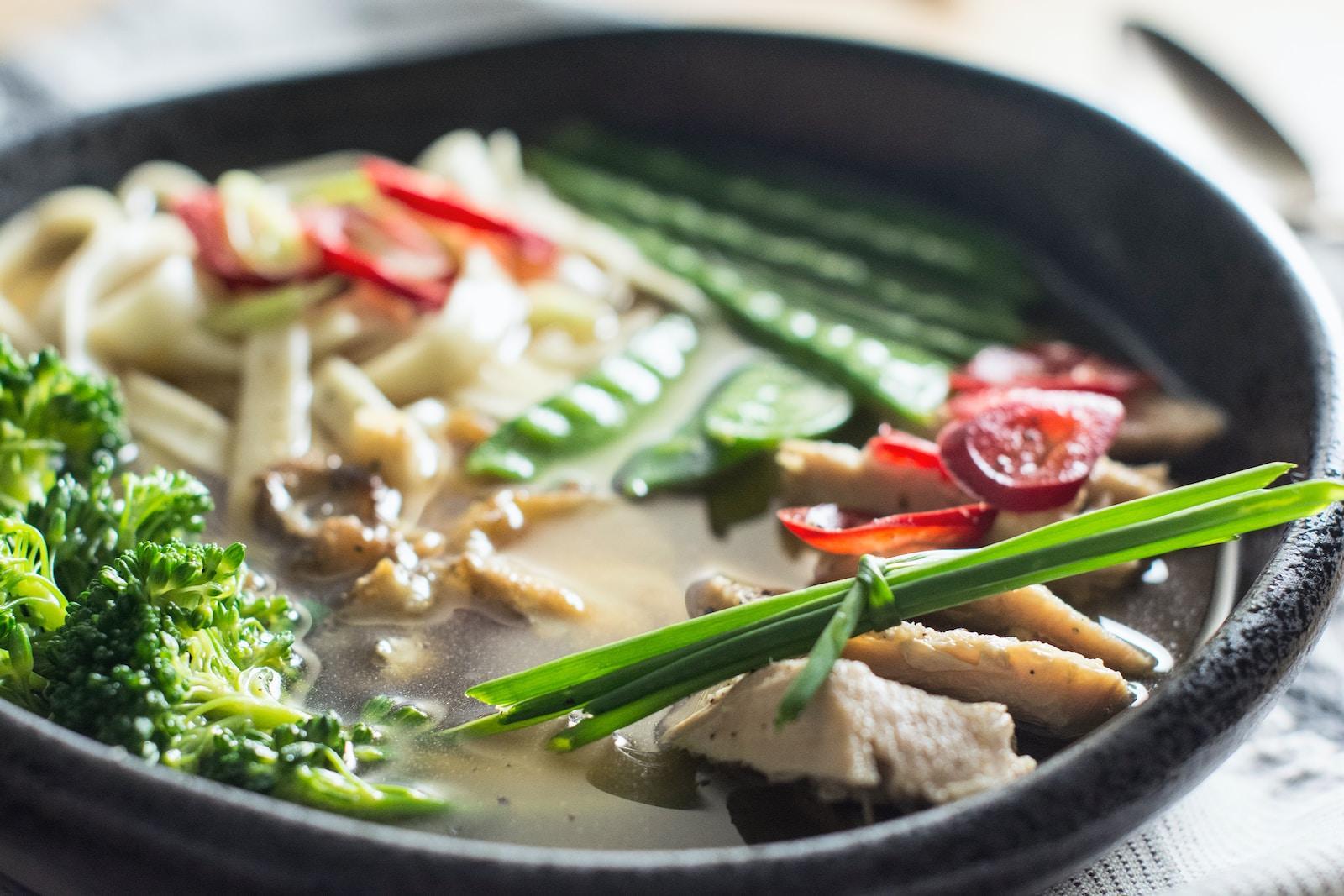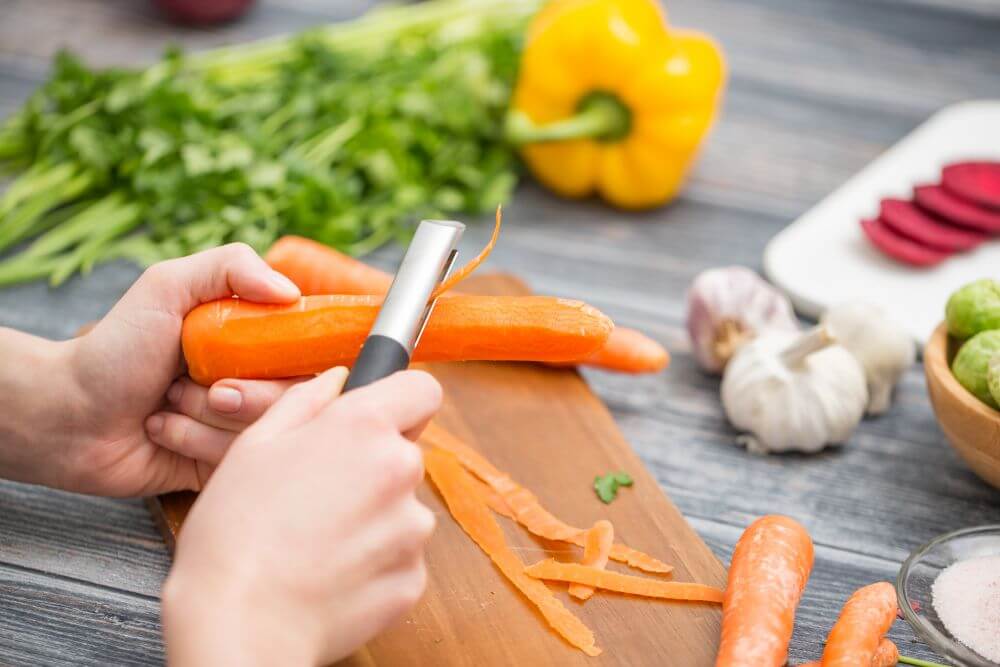Safely handling raw meat at home is a crucial aspect of food safety. Raw meat can harbor harmful bacteria such as E. coli, Salmonella, and Campylobacter, which can cause food borne illnesses. These illnesses can range from mild discomfort to severe symptoms that require hospitalization.
Therefore, it is essential to know how to handle raw meat safely to prevent the spread of harmful bacteria.
One of the most critical steps in safe handling of raw meat is proper hand washing. Before handling raw meat, it is important to wash your hands with soap and warm water for at least 20 seconds. This will help remove any bacteria or germs on your hands that could contaminate the meat.
Additionally, it is important to wash your hands after handling raw meat and before touching any other food or utensils. This will help prevent cross-contamination, which can spread harmful bacteria to other foods.
Another crucial aspect of safe handling of raw meat is proper storage. Raw meat should be stored in the refrigerator at 40°F or below to slow the growth of bacteria. It is also important to store raw meat on the bottom shelf of the refrigerator to prevent any drips or leaks from contaminating other foods.
When transporting raw meat, it should be kept in a cooler with ice packs to keep it at a safe temperature. By following these simple steps, you can help prevent the spread of harmful bacteria and ensure that your food is safe to eat.
Sources:
- https://www.foodsafety.gov/food-safety-charts/cold-food-storage-charts
- https://www.fsis.usda.gov/food-safety/safe-food-handling-and-preparation/food-safety-basics
- https://www.cdc.gov/foodsafety/keep-food-safe.html
Frequently Asked Questions:
Q: Can I wash raw meat before cooking it?
A: No, washing raw meat can actually increase the risk of spreading harmful bacteria. Cooking the meat to the appropriate temperature will kill any bacteria present.
Q: How long can I keep raw meat in the refrigerator?
A: Raw meat should be stored in the refrigerator for no more than three to five days. If you are not planning to use it within that time frame, it should be frozen.
Q: How can I tell if raw meat is safe to eat?
A: The best way to ensure that raw meat is safe to eat is to use a meat thermometer to check that it has reached the appropriate internal temperature. For example, ground beef should be cooked to an internal temperature of 160°F.
Contents
Why Safely Handling Raw Meat is Important

When it comes to cooking meat, it is essential to handle it safely. Raw meat can contain harmful bacteria like Salmonella, E. coli, and Campylobacter that can cause food borne illnesses. These bacteria can make you sick and even lead to hospitalization in severe cases. Therefore, it is crucial to understand the importance of safe handling of raw meat to prevent any contamination and ensure safe consumption.
Here are a few reasons why safe handling of raw meat is crucial:
Prevent Food borne Illnesses
As mentioned earlier, raw meat can contain harmful bacteria that can cause food borne illnesses. These illnesses can range from mild to severe, causing symptoms like diarrhea, vomiting, fever, and abdominal cramps.
In some cases, food borne illnesses can be life-threatening. Therefore, it is crucial to handle raw meat safely to prevent any contamination and reduce the risk of food borne illnesses.
Protect Your Family
When you cook for your family, you want to ensure that the food you serve them is safe to eat. By handling raw meat safely, you can protect your family from harmful bacteria and prevent any illnesses. It is especially important if you have young children or elderly family members who are more susceptible to food borne illnesses.
Avoid Cross-Contamination
Cross-contamination occurs when harmful bacteria from raw meat come into contact with other foods, surfaces, or utensils. It can happen easily if you do not handle raw meat correctly.
For example, if you use the same cutting board or knife to cut raw meat and vegetables, the bacteria from the meat can contaminate the vegetables. Therefore, it is essential to use separate cutting boards, utensils, and surfaces when handling raw meat to avoid cross-contamination.
Maintain Food Quality
Safe handling of raw meat not only prevents illnesses but also helps maintain food quality. When meat is not handled safely, it can spoil quickly, leading to an unpleasant odor and taste. By handling meat safely, you can ensure that it stays fresh and maintains its quality.
In conclusion, safe handling of raw meat is crucial to prevent foodborne illnesses, protect your family, avoid cross-contamination, and maintain food quality. By following proper handling and cooking techniques, you can ensure that the meat you serve is safe to eat.
Sources:
- Food Safety 101: An Essential Guide to Raw Food Handling
- Food Prep – How to Stay Safe When Handling Raw Meat
Frequently Asked Questions:
- Q: How can I tell if raw meat is safe to eat?
- A: Always check the expiration date and look for any signs of spoilage like an unpleasant odor or slimy texture. If in doubt, it is better to discard the meat.
- Q: Can I wash raw meat before cooking it?
- A: No, washing raw meat can actually spread harmful bacteria around your kitchen. Cooking the meat to the proper temperature is the best way to kill any bacteria.
Preparation Before Handling Raw Meat
Before handling raw meat, it is important to take necessary precautions to prevent contamination and the spread of harmful bacteria. Proper preparation can help ensure the safety of your food and prevent food borne illnesses. The following sub-sections outline the steps you should take before handling raw meat.
Cleaning and Disinfecting Surfaces and Utensils
Cleaning and disinfecting surfaces and utensils is an important step in preventing cross-contamination. Cross-contamination occurs when bacteria from one food item is transferred to another. To prevent this, clean and disinfect all surfaces and utensils that will come into contact with raw meat.
Use hot, soapy water to wash all utensils, cutting boards, and surfaces. Rinse with hot water and dry with a clean towel. Then, disinfect surfaces and utensils using a solution of one tablespoon of bleach to one gallon of water. Allow the solution to sit on the surface for at least one minute before rinsing with hot water and drying with a clean towel.
Washing Hands
Washing your hands is crucial to preventing the spread of harmful bacteria. Always wash your hands before and after handling raw meat. Use warm water and soap, and wash your hands for at least 20 seconds. Be sure to wash in between your fingers, under your nails, and up to your wrists.
If you are handling different types of raw meat, be sure to wash your hands in between handling each type. This will prevent cross-contamination and the spread of harmful bacteria.
Other Precautions
In addition to cleaning and disinfecting surfaces and utensils and washing your hands, there are other precautions you can take to prevent the spread of harmful bacteria. These include:
- Using separate cutting boards for raw meat and other foods
- Keeping raw meat refrigerated until ready to use
- Cooking meat to the appropriate temperature to kill harmful bacteria
- Using a meat thermometer to ensure meat is cooked to the appropriate temperature
By taking these necessary precautions, you can help ensure the safety of your food and prevent food borne illnesses.
Sources
Frequently Asked Questions
- Q: What temperature should I cook meat to?
- A: The safe minimum cooking temperature for meat varies depending on the type of meat. Refer to the Safe Minimum Cooking Temperatures chart for specific temperatures.
- Q: Can I use the same cutting board for raw meat and other foods?
- A: It is recommended to use separate cutting boards for raw meat and other foods to prevent cross-contamination.
Safe Handling of Raw Meat
Handling raw meat can be risky if not done properly. Raw meat can contain harmful bacteria that can cause food borne illnesses if not handled with care. Here are some tips to ensure safe handling of raw meat at home.
Separating Raw Meat from Other Foods
When handling raw meat, it is important to keep it separate from other foods to avoid cross-contamination. Cross-contamination occurs when bacteria from raw meat spreads to other foods, utensils, or surfaces. Here are some ways to prevent cross-contamination:
- Use separate cutting boards for meat and other foods.
- Wash your hands and utensils with hot soapy water before and after handling raw meat.
- Store raw meat on the bottom shelf of the refrigerator to prevent juices from dripping onto other foods.
Storing Raw Meat Properly
Proper storage of raw meat is essential to prevent the growth of harmful bacteria. Here are some tips for storing raw meat:
- Store raw meat in the refrigerator at a temperature below 40°F.
- Freeze raw meat if you are not planning to use it within a few days.
- Keep raw meat in its original packaging or wrap it tightly with plastic wrap or aluminum foil.
Thawing Raw Meat Safely
Thawing raw meat improperly can increase the risk of food borne illness. Here are some safe ways to thaw raw meat:
- Thaw raw meat in the refrigerator. This method takes longer but is the safest way to thaw meat.
- Thaw raw meat in cold water. Place the meat in a leak-proof plastic bag and submerge it in cold water. Change the water every 30 minutes until the meat is thawed.
- Thaw raw meat in the microwave. Use the defrost setting and follow the manufacturer’s instructions.
Cooking Raw Meat to Safe Temperatures
Cooking raw meat to safe temperatures is the best way to kill harmful bacteria. Here are some safe cooking temperatures for different types of meat:
- Beef, pork, veal, and lamb: 145°F with a three-minute rest time.
- Ground meats: 160°F.
- Poultry: 165°F.
Use a meat thermometer to ensure that the meat has reached the safe temperature. Insert the thermometer into the thickest part of the meat, away from bone, fat, or gristle.
Sources
- Food Safety 101: An Essential Guide to Raw Food Handling
- Guidelines to Safely Store and Handle Different Raw Meats
- Food Prep – How to Stay Safe When Handling Raw Meat
- Top 4 Rules to Follow When Handling Raw Meat
Frequently Asked Questions
Q: Can I use the same cutting board for raw meat and vegetables?
A: No, it is best to use separate cutting boards for raw meat and vegetables to prevent cross-contamination.
Q: How long can I store raw meat in the refrigerator?
A: Raw meat can be stored in the refrigerator for up to three days.
Q: Can I thaw raw meat on the counter?
A: No, thawing raw meat on the counter is not safe as it can promote the growth of harmful bacteria. Use one of the safe thawing methods mentioned above.
What to Do with Leftover Raw Meat
When it comes to handling raw meat at home, it’s important to know what to do with leftovers to ensure that they are safe to eat. Here are some tips on what to do with leftover raw meat:
Refrigerating or Freezing Leftover Raw Meat
If you have leftover raw meat, it’s important to refrigerate or freeze it as soon as possible to prevent bacteria from growing. Here are some guidelines on how to store leftover raw meat:
- Refrigerate: If you plan to use the leftover raw meat within a few days, store it in the refrigerator. Place the meat in an airtight container or wrap it tightly in plastic wrap or aluminum foil. Make sure the temperature in your refrigerator is set to 40°F or below.
- Freeze: If you don’t plan to use the leftover raw meat within a few days, freeze it. Place the meat in an airtight container or freezer bag. Label the container or bag with the date and type of meat. Make sure the temperature in your freezer is set to 0°F or below.
When reheating leftover raw meat, make sure it reaches an internal temperature of 165°F to kill any bacteria that may have grown.
Reheating Leftover Raw Meat
When reheating leftover raw meat, it’s important to do so safely to prevent food borne illness. Here are some tips on how to safely reheat leftover raw meat:
- Use a food thermometer: Use a food thermometer to check the internal temperature of the meat. Make sure it reaches an internal temperature of 165°F.
- Heat thoroughly: Reheat the meat thoroughly to ensure that it’s heated all the way through. This can be done in the oven, on the stove, or in the microwave.
- Don’t leave out at room temperature: Don’t leave the meat out at room temperature for more than two hours. Bacteria can grow rapidly at room temperature, which can cause food borne illness.
By following these guidelines, you can ensure that leftover raw meat is safe to eat. Always remember to handle raw meat with care to prevent food borne illness.
Sources:
- Food Safety 101: An Essential Guide to Raw Food Handling
- Food Prep – How to Stay Safe When Handling Raw Meat
- Guidelines to Safely Store and Handle Different Raw Meats
Frequently Asked Questions:
Q: How long can I keep leftover raw meat in the refrigerator?
A: You can keep leftover raw meat in the refrigerator for up to four days.
Q: Can I refreeze leftover raw meat?
A: It’s not recommended to refreeze leftover raw meat. Once it has been thawed, it should be cooked and eaten or discarded.
Q: Is it safe to eat leftover raw meat?
A: It can be safe to eat leftover raw meat if it has been stored properly and reheated to an internal temperature of 165°F. However, it’s important to handle raw meat with care to prevent food borne illness.
Conclusion
In conclusion, safe handling of raw meat is crucial to prevent food borne illnesses. It is important to follow guidelines to ensure that the meat is handled and stored properly.
Washing hands before and after handling raw meat is essential to prevent cross-contamination. Using separate cutting boards and utensils for raw meat and other foods is also important. Kitchen surfaces should be cleaned and disinfected regularly to avoid contamination.
Cooking meat to the correct temperature is critical to ensure that harmful bacteria are destroyed. Using a meat thermometer is an effective way to check the internal temperature of the meat.
Ground beef should be cooked to an internal temperature of 160-165 degrees F, while steaks should be cooked to 130-150 degrees F for different levels of doneness.
It is also important to store raw meat properly to prevent bacterial growth. Meat should be stored in the refrigerator at a temperature below 40 degrees F and should be consumed within a few days. Frozen meat should be thawed in the refrigerator or in cold water, not at room temperature.
By following these guidelines, we can ensure that we handle raw meat safely and prevent food borne illnesses. It is important to take these precautions to protect ourselves and our families from harmful bacteria.
Sources:
- Guidelines to Safely Store and Handle Different Raw Meats
- Food Safety 101: An Essential Guide to Raw Food Handling
- Food Prep – How to Stay Safe When Handling Raw Meat
- Safely Cooking and Handling Meat | Kansas Living Magazine
Frequently Asked Questions:
Q: How can I tell if meat is cooked to the correct temperature?
A: Use a meat thermometer to check the internal temperature of the meat. Ground beef should be cooked to an internal temperature of 160-165 degrees F, while steaks should be cooked to 130-150 degrees F for different levels of doneness.
Q: Can I thaw meat at room temperature?
A: No, it is not safe to thaw meat at room temperature. Meat should be thawed in the refrigerator or in cold water.
Q: How long can I store raw meat in the refrigerator?
A: Raw meat should be consumed within a few days of purchase and should be stored in the refrigerator at a temperature below 40 degrees F.









